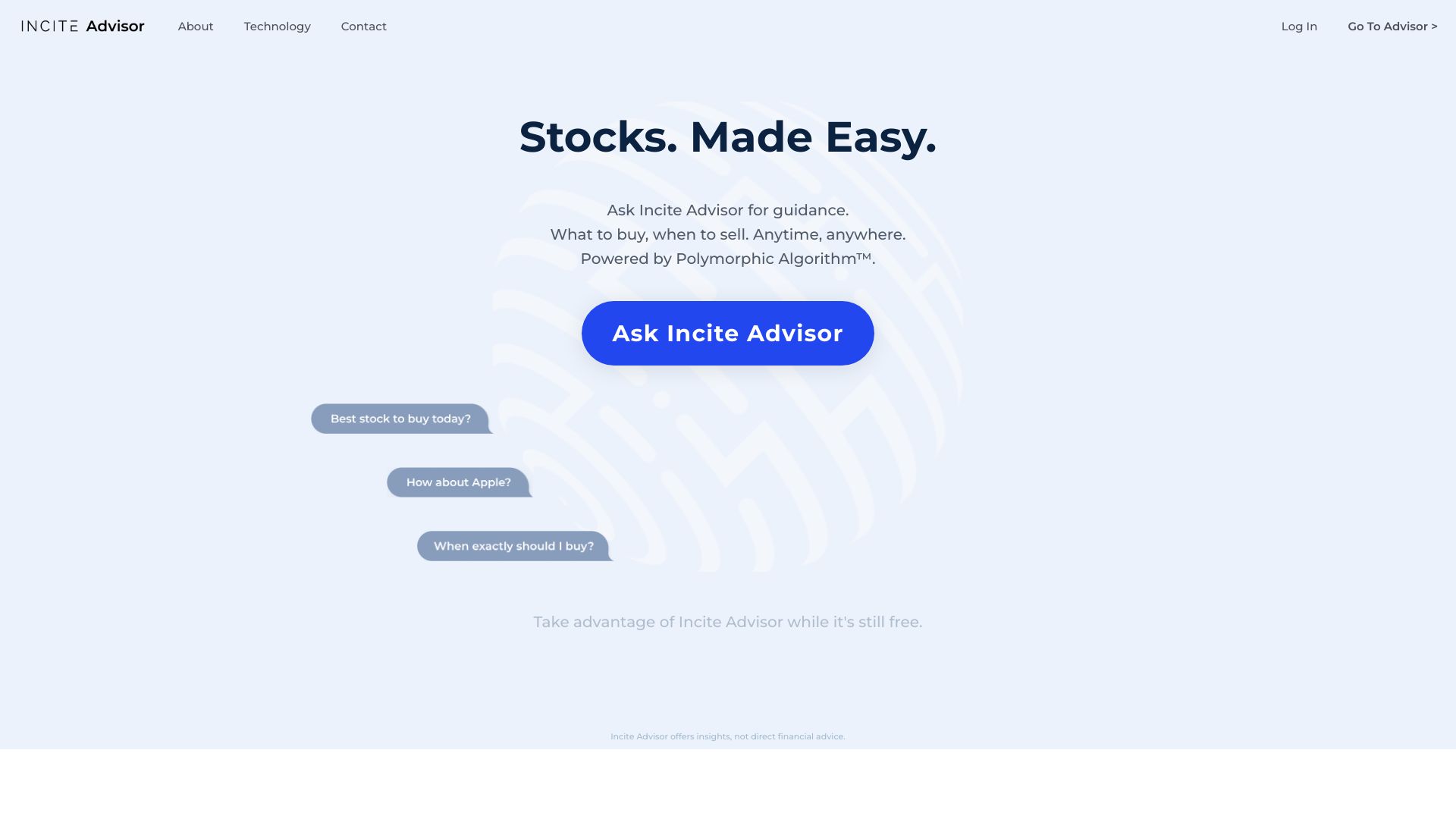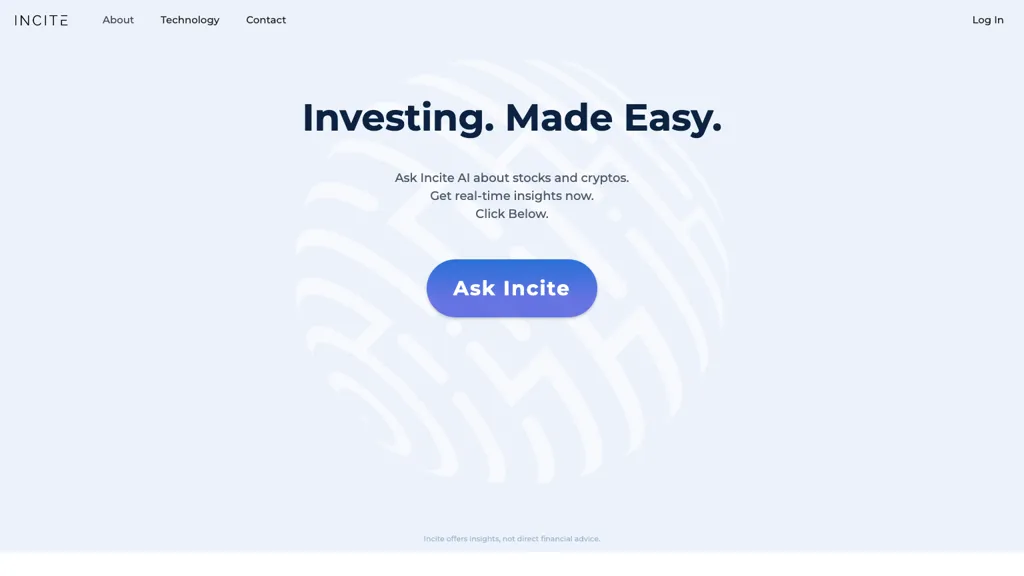20 Free Tips On Deciding On AI Stock Picker Platform Sites
20 Free Tips On Deciding On AI Stock Picker Platform Sites
Blog Article
Top 10 Suggestions For Evaluating The Strategy Customization Of Ai Stock Predicting And Analyzing Trading Platforms
It is crucial to remember that AI trading platforms with stock analysis and prediction can give users the option of customizing their platform according to their trading goals as well as their risk tolerances and market conditions. Platforms that offer powerful customization options can boost your trading efficiency. Here are 10 top strategies to help you evaluate the platform's ability to customize your strategy:
1. Evaluate Pre-Built Strategy Templates
Varieties of Templates: Find out whether the platform you are using offers pre-built templates for various trading styles (e.g. Day Trading or Swing Trading, Long-Term Investing).
Simple to use: Consider how easy it is to modify and use these templates according to your needs.
Performance history: See whether the platform has historical performance statistics on the pre-built strategy.
2. Create Custom Strategy
Drag-and-drop tools: Choose platforms with drag-and-drop interfaces that let you easily develop customized strategies.
Explore the coding options available on the platform. For advanced users, it may be beneficial to utilize custom scripting language (e.g. Python or R).
Flexibility - Make sure the platform you select allows you to define rules for entry and exit, parameters to manage risk, as well as other key components of your strategic plan.
3. Check for Backtesting Capabilities
Historical data: Determine if your platform offers enough historical data for testing strategies for backtesting.
Customizable parameters - Ensure that you have the ability to change parameters (e.g. indicators, timeframes) during backtesting.
Performance metrics: Find out whether the platform has specific performance metrics for backtested strategies (e.g. win rate sharpe ratio drawdown, etc.).
4. Evaluate Real-Time Strategy Testing
Paper trading Try out strategies in real-time with paper trading or simulation.
Live testing is a fantastic method of determining if your strategy can be implemented in the market in very little.
Real-time Adjustments: Test if you're able to adjust in real-time, based upon the market's conditions.
5. Evaluate the integration using technical indicators
Indicator libraries: Make sure the platform includes a complete collection of tools for technical use (e.g. MACD, RSI and moving averages).
Custom indicators. Ensure that you are able to design or implement customized indicators as part of your strategy.
Verify the indicators' combination.
6. Check for Risk Management Tools
Stop-loss/take-profit: Ensure the platform allows you to set stop-loss and take-profit levels within your strategies.
Size of the position: See whether you are able to define position sizing rules (e.g., fixed amount or percentage of your portfolio) to manage risk.
Risk-reward Ratio: Confirm that the platform is able to set individual risk-reward levels for trades and strategies.
7. Evaluate Multi-Asset Strategy Support
Asset classes: Make sure the platform is able to support strategies across various asset classes (e.g., stocks, ETFs, options and forex).
Cross-asset strategies: Check whether you can develop strategies that incorporate various asset classes (e.g., Hedging, pairs trading).
Market coverage - Verify that the platform is covering the markets that you're in (e.g. US and international markets and copyright and so on.).
8. Assess the Automation and Execution
Automated trading: Ensure that the platform can be capable of automating strategies based on established rules.
Order types: Verify that the platform can execute various types of orders, such as stop, limit and market.
Latency: Ensure that the platform is running at low latency when trading, especially if you employ high-frequency strategies.
9. Look for tools for optimizing your strategy.
Optimization of parameters: Ensure that the platform provides tools for optimizing strategy parameters (e.g. grid search, genetic algorithm).
Machine learning integration. See if your platform incorporates machine learning capabilities to enhance and improve strategies.
Analysis of scenarios: Ensure that the platform is able to test strategies under various market conditions (e.g. volatile bull, volatile, or bear).
Review User Support for Community Reviews and Feedback
User feedback is important to understand the effectiveness of a platform.
Forums for community members: See whether you can locate forums where users can discuss and share their custom strategies.
Support resources: Make sure the platform has tutorials, webinars, or other documentation which will assist users in developing and enhance their strategies.
Bonus Tips
Trial period: Test the customisation capabilities of the platform by using a trial or demo.
Scalability: Make sure the platform can handle increasingly complex strategies in your trading evolves.
Support for customers: See whether you can seek assistance for questions related to strategy or issues.
Check these points to determine the AI stock predicting/analyzing platforms' capacity to tailor strategies. When you do this, you will ensure that you choose a platform that is compatible with your objectives in trading and lets you implement and refine your individual strategies. A platform that has robust customization capabilities can allow you to adapt to changes in market conditions and improve your trading performance. Have a look at the most popular a replacement about best ai for trading for more examples including market ai, ai for investing, best ai trading app, chatgpt copyright, incite, trading ai, ai for stock trading, ai stock market, market ai, investment ai and more.
Top 10 Tips On How To Evaluate The Speed And Latency Ai Analysis And Stock Prediction Platform
Latency and speed are crucial elements when it comes to evaluating AI stock prediction and analysis platforms, especially for algorithmic traders, active traders as well as high-frequency traders. A delay of just milliseconds can be detrimental to trading execution. Below are the top 10 suggestions for evaluating the speed and latency of these platforms:
1. Real-time data feeds to be analyzed
Data delivery speed: Ensure that the platform delivers real-time data with minimal delay (e.g. less than a millisecond delay).
Data source proximity: Check if the platform's servers are situated near major exchanges to reduce the time for data transmission.
Data compression: Check for efficient techniques for data compression that speed up the delivery of data.
2. Test the Trade Execution speed
Order processing time: Measure how fast the platform process and executes trades after you have submitted an order.
Direct Market Access: Verify that the exchange you use offers DMA. DMA is a feature which allows you to transmit orders directly to exchanges, without intermediaries.
Execution reports: Check whether the platform offers comprehensive execution reports, such as timestamps for orders, confirmation and fill.
3. Examine the Platform's Responsiveness
User interface (UI or speed of the user interface): This is a measure of how quickly a platform's UI responds to inputs you enter (e.g. clicking buttons, loading graphs).
Chart updates: Check to see if the charts and visuals are updated in real time with no lag.
Performance of mobile apps If you are using a mobile app, ensure it performs just as fast as a desktop version.
4. Check for Low Latency Infrastructure
Server location Check that the platform is running a low-latency servers that are close to financial hubs and exchanges.
Co-location services: Find out whether your exchange offers this feature. This lets you host trading algorithms on servers located near the exchange.
High-speed networks: Determine whether the platform is using fiber-optic networks with high speeds or other low-latency technology.
5. Evaluation of Simulation and Backtesting Speed
Test the speed at which your platform is able to analyze and process historical data.
Simulation latency: Verify that the platform can simulate trading in real time without obvious delays.
Parallel processing (or distributed computing) Find out if a platform uses parallel or distributed processing to speed up the complexity of calculations.
6. Evaluation of Latency in API
API responses: Find out how quickly APIs respond to queries (e.g. getting information from the platform, or placing orders).
Rate limits: Determine if the API has reasonable rates to avoid delays in high-frequency trading.
WebSockets support: Verify that the platform supports WebSockets protocols to provide low-latency streaming of data.
7. Test platform stability under load
Create scenarios for high-volume trading to determine whether the platform is reliable and stable.
Try the platform out in periods of high volatility in the market to make sure it is able to handle sudden changes in price.
Utilize the tools available on the platform to stress-test your strategies under extreme conditions.
8. Evaluate network and connectivity
Internet speed requirements. Check that your connection speed is sufficient to reach the recommended speed of the platform for optimal performance.
Make sure there aren't any redundant connections.
VPN latency - If you use a VPN to connect, make sure it doesn't introduce significant latency. Also, make sure the platform provides alternatives.
9. Check for Speed Optimisation Features
Pre-trade analytics - Make sure that the platform has analytical tools for pre-trade to improve order routing.
Smart Order Routing (SOR). Verify that the platform utilizes SOR in order to locate the fastest and most efficient execution locations.
Monitoring latency: Find out whether the platform has tools for monitoring and analyzing the latency in real-time.
Benchmarks for User Feedback Review
User reviews: Study reviews from users to assess the platform's speed as well as latency performance.
Benchmarks provided by third party sources: Search for independent reviews or benchmarks comparing the speed of the platform to that of its competitors.
Testimonials and case studies Find out if there are any case studies that demonstrate the effectiveness of the platform's low-latency capabilities.
Bonus Tips
Free trial period: Try the platform's speed and latency in real-world scenarios by using the demo or free trial.
Customer support: Ensure the platform has assistance with issues related to latency, or optimization.
Hardware requirements: Determine if the platform requires specific hardware (e.g. high-performance computers) to run at maximum speed.
Utilizing these guidelines using these tips, you will be able to precisely assess the speed, latency, and precision of AI software for analyzing and predicting stocks. This will allow you to select a system that meets your needs for trading and minimize any possible delays. A low latency is essential for high-frequency or algorithmic traders where even small delays can affect their profitability. Follow the top sell for ai share trading for site info including ai stock investing, ai stock investing, ai stock analysis, ai stock prediction, ai investment tools, best ai stock prediction, investing with ai, best stock prediction website, ai stock analysis, free ai stock picker and more.